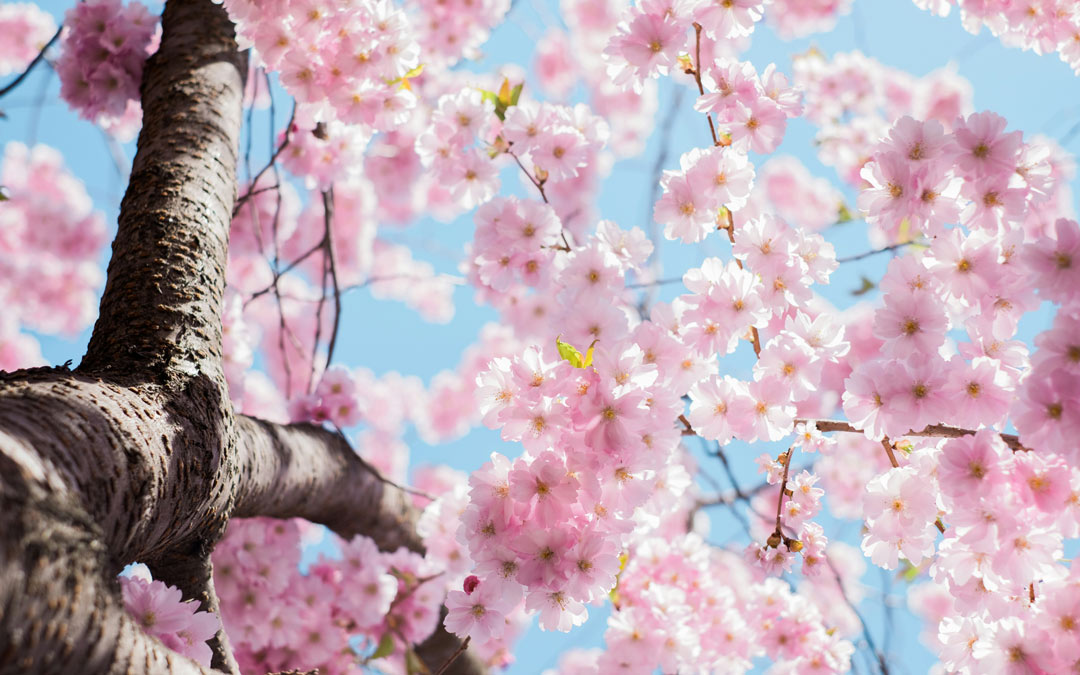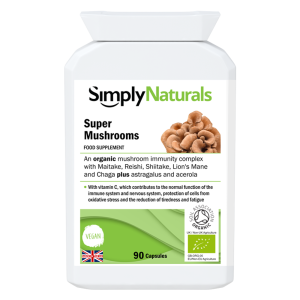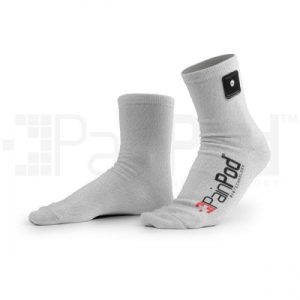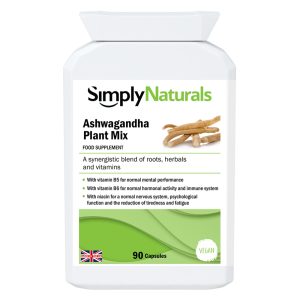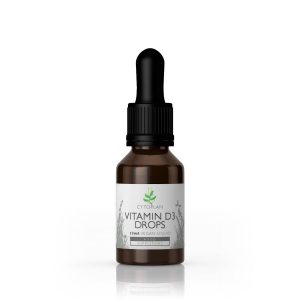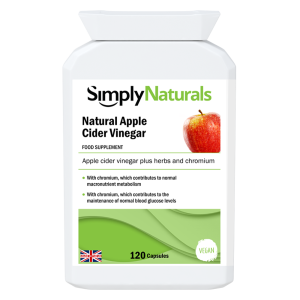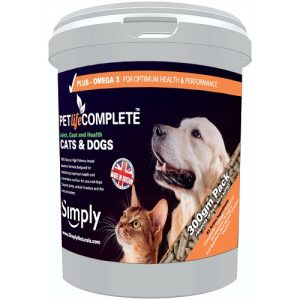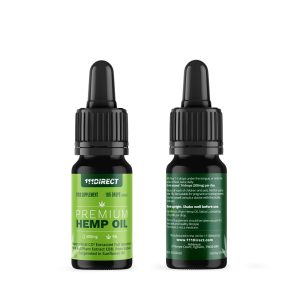As the world awakens from winter’s slumber, spring brings forth not only blooming flowers and warmer weather but also the dreaded return of seasonal allergies for many. The pollen count rises, triggering sneezing fits, itchy eyes, and nasal congestion that can make even the simplest tasks feel daunting. But fear not, fellow snifflers! There are numerous scientifically-backed methods to combat spring allergies and reclaim the joy of the season. Here are ten proven strategies to help you breathe easier:
1. Know Your Enemy

The analogy of “Know Your Enemy” perfectly captures the importance of identifying your allergy triggers. Just like understanding your opponent’s strengths and weaknesses is crucial in any battle, pinpointing what sparks your allergies allows you to:
- Target your defences:
Once you know the specific allergens (like tree pollen or mould spores) that trigger your reaction, you can focus your preventive efforts. This might involve taking allergy medication during high pollen seasons, using air purifiers at home, or avoiding spending time outdoors on mouldy days. - Minimise exposure:
By identifying the culprits, you can take steps to minimise your contact with them. For example, if you’re allergic to grass pollen, you might mow the lawn less frequently or wear a mask while doing yard work. - Manage symptoms better:
Knowing your triggers can help you recognise the early signs of an allergic reaction. This allows you to take prompt action with medication or by removing yourself from the allergen source, preventing a full-blown attack.
Overall, identifying your allergy triggers is the first step towards effectively managing your allergies and improving your quality of life. It’s like having a roadmap to navigate allergy season and minimise disruptions to your daily routine.
2. Pollen Patrol

Pollen Patrol” is a great way to take charge of your allergies during peak season.
Here’s your guide to conquering allergies during peak season with “Pollen Patrol”:
- Daily Duty:
Make checking the pollen forecast a regular part of your day, just like brushing your teeth or looking at the weather forecast. There are many resources online and weather apps that offer pollen forecasts specific to your location. - Strategic Shelter:
When pollen counts are high, limit your exposure by staying indoors. This is especially important in the mornings and evenings when pollen tends to be most abundant. Pollen counts are typically highest in the early hours (between 5 am and 10 am) and again in the late afternoon (around sunset). By staying indoors during these times, you can significantly reduce the amount of pollen you breathe in. - Double Down on Defence:
Here are some extra tips to fortify your Pollen Patrol routine:
Close windows and doors: Keep pollen out of your home by shutting windows and doors, especially on high pollen count days.
Air purifiers: Think about using air purifiers with HEPA filters in your home, which can trap pollen particles.
Change clothes: If you do spend time outdoors when pollen counts are high, take a shower and change your clothes as soon as you get inside to remove any pollen clinging to you.
By following these “Pollen Patrol” steps, you can significantly reduce your exposure to allergens and minimise allergy symptoms, allowing you to breathe easier and enjoy the outdoors more throughout the season.
3. Become a Fortress Dweller
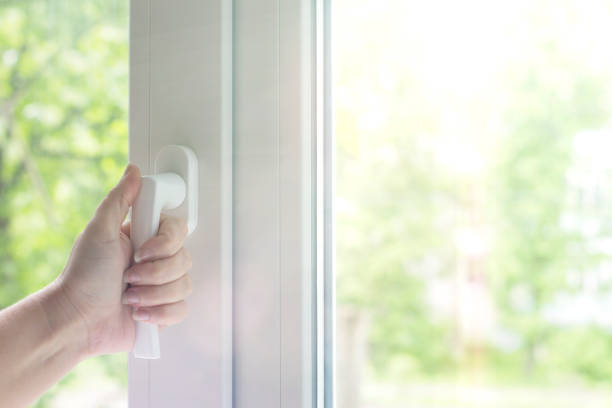
Right, then, let’s turn your home into a blooming brilliant allergy-fighting fortress! Here’s how to keep that pesky pollen at bay during those high-pollen seasons, all in good British fashion.
- Batten Down the Hatches:
The first line of defence is keeping those windows firmly shut during peak pollen times. Pollen counts tend to be worst first thing in the morning and evening, so keep everything closed during those hours. A bit like drawing the curtains on hay fever! - Bodge out the Beasties with a Biffy Air Con Unit:
Invest in an air conditioning unit with a cracking HEPA filter. HEPA stands for High-Efficiency Particulate Air, which basically means it’ll gobble up all those tiny pollen particles, dust mites, and other allergy-inducing nasties floating about. This clever chap will whizz the air around your home, constantly cleaning it and making it much easier to breathe.
Now, there are a few things to keep in mind with this fortress strategy:
- Trapped Troublemakers:
While the HEPA filter nabs those allergens, they’ll still be lurking about inside. Regular cleaning with a damp cloth or a hoover with a HEPA filter is essential to remove these blighters from surfaces. - Fresh Air Fix: Keeping the windows shut all the time can make the air a bit stale, eh? Here’s how to get some fresh air without the pollen peril:
- Quick Blasts of Freshness: Open the windows for short bursts during low-pollen times, like in the middle of the day, to let some fresh air whoosh through.
- Extractor Fan Extravaganza:
Run the extractor fans in your bathroom and kitchen to get rid of moisture and any lingering nasties. - Temperature Control: Keeping the windows closed might make things a tad toasty, especially in the summer. That’s where the air conditioning comes in, but make sure you keep the filter clean so it works like a charm.
By following these tips, you can create a comfy and allergy-free haven inside your home, even when the pollen count is through the roof. Remember, this is just one weapon in your allergy-fighting arsenal. Consulting your doctor and following their advice is always the best course of action to keep those allergies at bay.
4. Shower the Pollen Away:

Here’s how to become a right proper pollen-fighting machine after venturing outside during those high-pollen seasons:
- Shower the Blighter Off! The moment you step back indoors, head straight for the shower. Give yourself a good scrub down from head to toe, washing away any sneaky pollen clinging to your skin and hair. Think of it as giving that pesky pollen the boot!
- Wash Those Wandering Woes: Don’t forget your hair! Pollen loves to get tangled up there, so give it a thorough wash with shampoo. This will help remove any pollen particles that might be causing irritation on your scalp or triggering those sniffles.
- Clothes Off, Pollen Be Gone! Ditch those clothes you wore outside straight away. Pollen can cling to fabric, so the quicker you get them off, the better. Toss them straight into the wash with some laundry detergent – that’ll show that pollen who’s boss!
Here are some extra tips to make sure you’re truly pollen-free:
- Sticky Situation: Consider keeping a lint roller near the door. You can give yourself a quick once-over with it before heading into the house proper, just to catch any stray pollen clinging to your clothes.
- Shoe Shuffle: Leave your shoes at the door, especially if you’ve been out in long grass or fields. Pollen can easily get tracked in, so creating a shoe-free zone near the entrance will help keep your haven pollen-free.
- Drying Dilemmas: If possible, avoid drying your clothes outside during peak pollen season. Instead, opt for the tumble dryer or an indoor drying rack. You don’t want all that pollen hanging around outside your window, waiting to sneak back in!
By following these simple steps, you can transform your home into a pollen-free haven and stop those pesky allergens from ruining your day. Remember, consistency is key! The more diligent you are about removing pollen from yourself and your clothes, the easier it will be to breathe easy indoors.
5. Mask Up

Let’s gear up for some gardening without the sniffles. When you’re out battling the weeds and whatnot, especially during peak pollen times, don your armour:
- A trusty N95 face mask: This little marvel acts as a pollen shield, trapping those pesky airborne nasties before they can tickle your nose.
- Sunnies for the win: Not only will sunglasses protect your peepers from the sun’s glare, but they can also help shield your eyes from pollen wafting about.
- A splendid hat: Pop on a hat to create a further barrier for your head and prevent pollen from settling in your hair. Think of it as a pollen-deflecting umbrella for your bonce!
6. Become a Medication Master

Let’s turn you into a dab hand at managing allergies with some over-the-counter remedies, like a true medication master!
Here’s the lowdown:
- Antihistamine Arsenal:
There are brilliant medications called antihistamines available over the counter at most chemists. Some popular brands include loratadine (Claritin) or cetirizine (Zyrtec). These little lifesavers work by blocking the effects of histamine, a substance your body releases during an allergic reaction. Histamine is the villain that causes all that sniffling, sneezing, and itchy eyes. By blocking its action, antihistamines can significantly reduce these allergy symptoms. - Consult your Chemist or Doctor:
It’s always wise to have a chat with your chemist or doctor before starting any new medication, even over-the-counter ones. They can advise you on the right type of antihistamine for your specific needs and make sure it won’t interfere with any other medications you’re taking.
Here are some additional pointers to remember:
- Drowsy Doze: Some antihistamines can make you feel a bit drowsy, so it’s best to avoid taking them if you need to be on top form, like when driving or operating machinery. Your chemist or doctor can recommend a non-drowsy version if that’s a concern.
- Read the Label: Always follow the instructions on the label carefully. Don’t take more than the recommended dose, and be aware of any potential side effects.
By becoming a medication master and using antihistamines wisely, you can keep those allergies at bay and enjoy the great outdoors, even during peak pollen seasons. Remember, consulting your doctor or chemist is always the best first step for personalised advice.
7. Nasal Sprays for the Win:

Let’s delve into the world of nasal sprays, a secret weapon for many an allergy sufferer. Here’s the deal with these champions:
- Corticosteroid Cavalry:
These fellas are called nasal corticosteroids, a fancy way of saying they’re sprays containing steroid medication for your nose. Don’t worry, these are different from the muscle-building steroids – these are specifically designed to tackle inflammation in your nasal passages. - Inflammation Squashers:
When that pesky pollen tickles your nose, it triggers inflammation, leading to all that sniffling and congestion. Nasal corticosteroids are like a crack swat team, going straight to the source of the problem and reducing that inflammation. They can be particularly effective if you use them preventatively, before allergy season even starts. - Doc’s Orders:
Now, while these sprays are mighty helpful, it’s important to have a chat with your doctor first. They can advise you on the right type of nasal spray for your specific allergies and make sure it’s safe for you to use.
Here’s a few extra pointers to remember:
- Spray Savvy:Using a nasal spray might seem straightforward, but there can be a knack to it. Your doctor will show you the correct technique to ensure the medication reaches the right spot in your nose and works effectively.
- Patience is a Virtue: Unlike some medications, nasal corticosteroids take a little longer to kick in, usually a few days. But stick with it – the long-term relief is worth it!
By becoming a nasal spray champion, you can keep your nasal passages calm and collected, even during the worst pollen attacks. Remember, a chat with your doctor is always the best first step before embarking on any new medication.
8. Neti Pot Power

Let’s talk about neti pots, a rather nifty tool for keeping your nasal passages squeaky clean and allergies at bay. Here’s the gist:
- Neti Pot Nirvana:
A neti pot is a little teapot-like contraption used for a practice called nasal irrigation. It involves flushing your nasal passages with a saline solution, which is basically fancy talk for salt water. - Soothing and Flushing:
This saline rinse works wonders in two ways. Firstly, it soothes irritated nasal passages caused by allergies or that pesky pollen. Secondly, it helps to flush out any allergens lurking in your nose, like pollen, dust mites, or even pet dander. Think of it like giving your nose a good spring clean! - Safe and Sound:
For many allergy sufferers, neti pots are a safe and effective way to manage their symptoms. They’re readily available at most chemists and quite easy to use once you get the hang of it.
Here’s a few bits to keep in mind:
- Doc’s Approval is Best: While generally safe, it’s always a good idea to chat with your doctor before using a neti pot, especially if you have any underlying health conditions.
- Technique Triumphs: There is a knack to using a neti pot properly. Your doctor or pharmacist can show you the best way to use it to ensure you get the most benefit and avoid any irritation.
- Cleanliness is Key: Keeping your neti pot clean is essential. Rinse it thoroughly with clean, distilled water after each use and let it air dry completely to prevent any bacterial growth.
By harnessing the power of the neti pot, you can keep your nasal passages feeling tip-top and allergies under control. Remember, consulting your doctor is always the best first step before trying any new remedy.
9. Natural Allies

Let’s explore some natural allies in the fight against allergies. While they might not be a magic bullet, they can be a jolly good addition to your allergy-fighting arsenal.
- Honey on the Offensive: There’s a buzz about local honey as a potential aid for allergies. The theory is that consuming local honey exposes you to tiny amounts of the pollen in your area, which might help build up a tolerance. However, the research is a bit wobbly at the moment, so it’s not a guaranteed fix.
- Quercetin’s Quest: Quercetin is a fancy name for a naturally occurring flavonoid found in fruits and vegetables like apples, berries, and onions. Some studies suggest it might have mild antihistamine properties, potentially offering some relief from allergy symptoms.
- Doc Knows Best: Before diving headfirst into honey pots or popping quercetin supplements, it’s important to have a chat with your doctor. They can advise you on whether these natural remedies might be suitable for you and, more importantly, check if they interact with any medications you’re already taking.
Here’s a few extra pointers to remember:
- Natural Doesn’t Mean Risk-Free: Just because something is natural doesn’t mean it’s completely without risks. Some people might be allergic to honey itself, and high doses of quercetin can cause stomach upset. Your doctor can help you navigate these potential issues.
- Food First: If you’re interested in quercetin, consider upping your intake of fruits and vegetables rich in it before resorting to supplements. A healthy diet is always a good foundation for managing allergies.
By exploring natural allies and getting your doctor’s green light, you can see if these options provide you with some gentle relief from allergies. Remember, consulting your doctor is always the best first step before trying any new remedy, natural or otherwise.
10. Air Purify Your Haven

Let’s talk about creating a right proper allergy-free haven inside your home with the help of an air purifier. Here’s the lowdown:
- Banishing Beasties with a Biffy Machine:
An air purifier is a nifty little machine that helps trap nasty allergens like pollen, dust mites, and pet dander floating around in your home’s air. It works a bit like a tiny vacuum cleaner, constantly sucking in the air, filtering out the nasties, and then releasing cleaner air back into the room. - HEPA Hero:
Look for an air purifier with a HEPA filter, which stands for High-Efficiency Particulate Air. Think of it as a super-fine sieve that traps even the tiniest of allergy-causing particles. - Breathing Easy Indoors:
With an air purifier keeping the bad guys at bay, you’ll be breathing much easier inside your home. This is especially helpful during peak pollen seasons when those pesky outdoor allergens are trying to sneak in through windows and doors.
Now, there are a couple of things to keep in mind:
- Filter Frenzy:
HEPA filters need to be changed regularly to keep working effectively. The exact frequency will depend on the model and how often you use it, so be sure to check the manufacturer’s instructions. - Cleanliness is Key:
While the air purifier is busy battling airborne nasties, it’s still important to keep your home clean and dust-free. Regular vacuuming and wiping down surfaces will help reduce the overall allergen load indoors. - Placement Power:
The placement of your air purifier can make a big difference. Ideally, you want to put it in the room where you spend the most time, like your bedroom or living room.
By bringing in an air purifier with a HEPA filter, you can transform your home into a clean-air haven, offering welcome relief from allergies, especially during those high pollen times. Remember, this is just one weapon in your allergy-fighting arsenal. Consulting your doctor for personalised advice is always the best first step.
Remember, consistency is key! By following these methods regularly, you can significantly reduce allergy symptoms and enjoy the beauty of spring without the sniffles. If your allergies are severe, consult an allergist for personalized treatment plans like allergy shots. With the right approach, you can breathe easy and embrace the joys of spring!
Disclaimer:
This article is intended for informational purposes only and does not constitute medical advice. Please consult with your healthcare professional for personalised guidance on managing your condition.
Disclosure:
This website includes affiliate links, and we may earn a commission when you click on any of these links. Your support helps us continue providing valuable content. Thank you!

